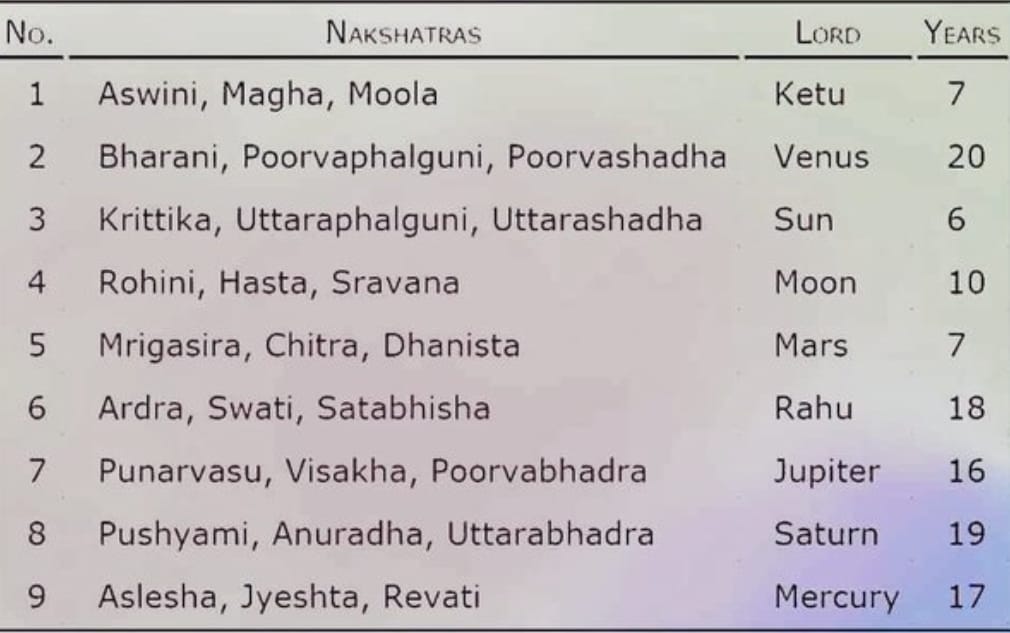How to Calculate the starting Daśā at Birth
In Vedic Astrology, there are Daśā periods throughout your life that delineate the stages of your life based on the planet ruling it. How is it determined where it starts?
In Vedic Astrology, there are Daśā periods throughout your life that delineate the stages of your life based on the planet ruling it. These periods can be very very long, spanning years, so when they change, there are usually very big shifts that happen along with them. Based on these periods and sub-periods, certain houses and planets of your life are activated.
For every person, the starting period is different. But what determines that? This is what I learned from Mr. PR Selva Ganesh a few days ago, and wanted to share it here as I found it so simple and fascinating at the same time.
To start, here is an important chart of Nakshatras, their planetary Lords, and the number of years the planet will rule each Daśā period.
Here is the Sanskrit version I made for those who prefer it:
I’m going to use Deva.guru to show the calculation. So if someone is born today, October 19th, 2022 at 11:42:58am in Udupi, Karnataka, their Panchanga will look as follows:
If you look at the Nakṣatra field, the moon is in Aśleṣā Nakṣatra, with 86% of it left to transit through.
Now, looking back at our Nakṣatra chart, we can see that Aśleṣā is owned by Budha, or Mercury. That means the native will be born into Mercury Daśā! Mercury Daśā lasts for 17 years. There is 86% left of it for the Moon to transit through, so we just take 86% * 17 years to get 14.62 years.
This native will be born into the Mercury Daśā period with 14.62 years left of it. After 14.62 years, they will transition to the full 7 years of Ketu followed by 20 years of Venus, etc etc. This can be confirmed by Deva.guru calculation of Viṁśottarī Daśās below (note that 17 - 2.4 years = 14.6, and 14.6 years is when they start their Ketu Daśā, 7 years later at 21.6 years they start Venus, etc):
Since Vedic Astrology is so vast, as a beginner, I take a lot of these things for granted and just “go with it” without questioning much just to keep on learning. But it was another student in my class that did question it and we all learned such an elegant answer for how the start of the Daśā periods gets calculated. A good reminder to keep questioning - and maybe once in a while, the teacher will not put the question aside as too complicated and give the answer!





